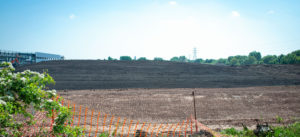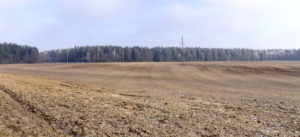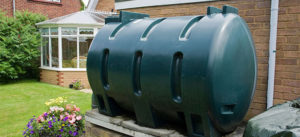Groundwater supplies between 25% and 40% of the world’s drinking water as well as being essential for farm irrigation. And if it becomes contaminated it requires remediation to protect the health of humans and animals as well as the environment.
But what is groundwater? And how does it become polluted and contaminated?
What is groundwater?
Water continually moves through the environment, which is the water cycle. When water evaporates from the seas and oceans it condenses into clouds and then falls as rain. The water then flows into rivers and returns into the sea.
But one aspect of rainfall that is often overlooked is groundwater. This is the rain that falls on the earth’s surface.
Once it falls, the soil acts like a giant sponge and it soaks in. Although vegetation takes some of the water, the rest trickles down through the layers of the earth. This water is known as groundwater, which is contained in permeable rock formations known as aquifers.
Most groundwater is clean but it can become polluted or contaminated as a result of everyday human activities.
Polluted groundwater
Groundwater doesn’t usually concern us until a problem arises. All sorts of pollution can leach over time and reach groundwater.
The main source of contamination is from man-made products, such as oil and chemicals. When such pollutants reach groundwater it becomes unsafe and unfit for human use.
For example, pesticides and fertilisers can find their way into groundwater supplies over time; motor oil may also seep in to affect it. Untreated waste from septic tanks and tanks containing oils can also leach into groundwater.
We helped deal with a kerosene spillage at a farm. Swift action meant the liquid was prevented from entering the groundwater. If a tank had a small leak that was undetected, there’s every chance the kerosene might have reached it.
Other contaminants include spills from industrial operations, leakage from landfills and infiltration of something called ‘urban runoff’. This happens when drainage systems or sewers are overwhelmed during storms and floods and the water runs onto the land.
As well as potentially being consumed by humans, polluted groundwater may also reach the food chain due to its use in farm irrigation. And it can also harm wildlife.
Groundwater remediation
Dealing with contaminated groundwater is essential for the health and well-being of humans and wildlife, as well as the environment. This is where remediation is necessary, which means either removing pollutants or carrying out conversion methods to turn them into harmless products.
Contaminates include physical, inorganic chemical, organic chemical and bacteriological items. By applying state-of-the-art techniques, ATG Group can remove pollutants from groundwater to bring it to a legally sound standard.
First of all, we identify contaminates and carry out a risk assessment. We will use several techniques, which include:
- Air sparring
- Aerobic and anaerobic degradation
- Pump & Treat
- Enhanced Natural Attenuation
Looking after groundwater is essential for health and well-being. Treating and remediating any leaching is necessary to safeguard people and the environment.
Legal enforcement
Anyone polluting groundwater faces prosecution.
For England and Wales, the principal water pollution offences are within the Environmental Permitting (England and Wales) Regulations 2010: regulations 38(1) and 12(1). The offences are similar to ones that used to be set out in section 85 of the Water Resources Act 1991.
It is an offence to cause or knowingly permit a water discharge activity unless you are complying with an environmental permit or exemption.
Water discharge activities listed in Schedule 21 include:
- discharging poisonous, noxious or polluting matter or solid waste matter into inland freshwater, coastal waters and relevant territorial waters. The legislation does not define poisonous, noxious or polluting. These words are normally given their ordinary meanings.
- discharging trade or sewage effluent into inland freshwater, coastal waters and relevant territorial waters
- cutting or uprooting substantial amounts of vegetation in any inland freshwaters, without taking reasonable steps to remove it.
Penalties
Magistrates can impose unlimited fines and/or sentences of up to 12 months’ imprisonment. A Crown Court judge can also enforce unlimited fines and/or sentences of up to five years imprisonment.
To find out more about our Groundwater Remediation services, contact us today.








